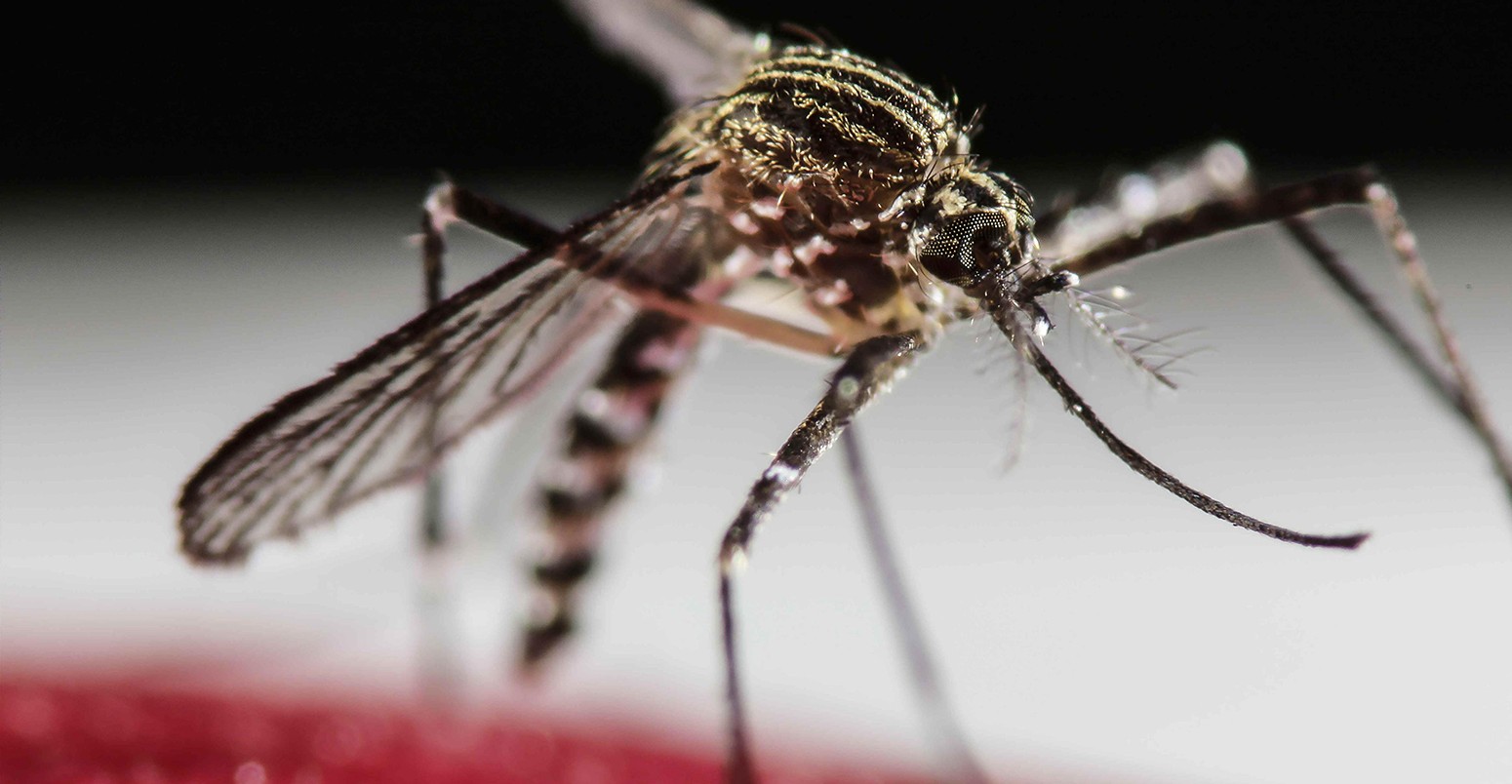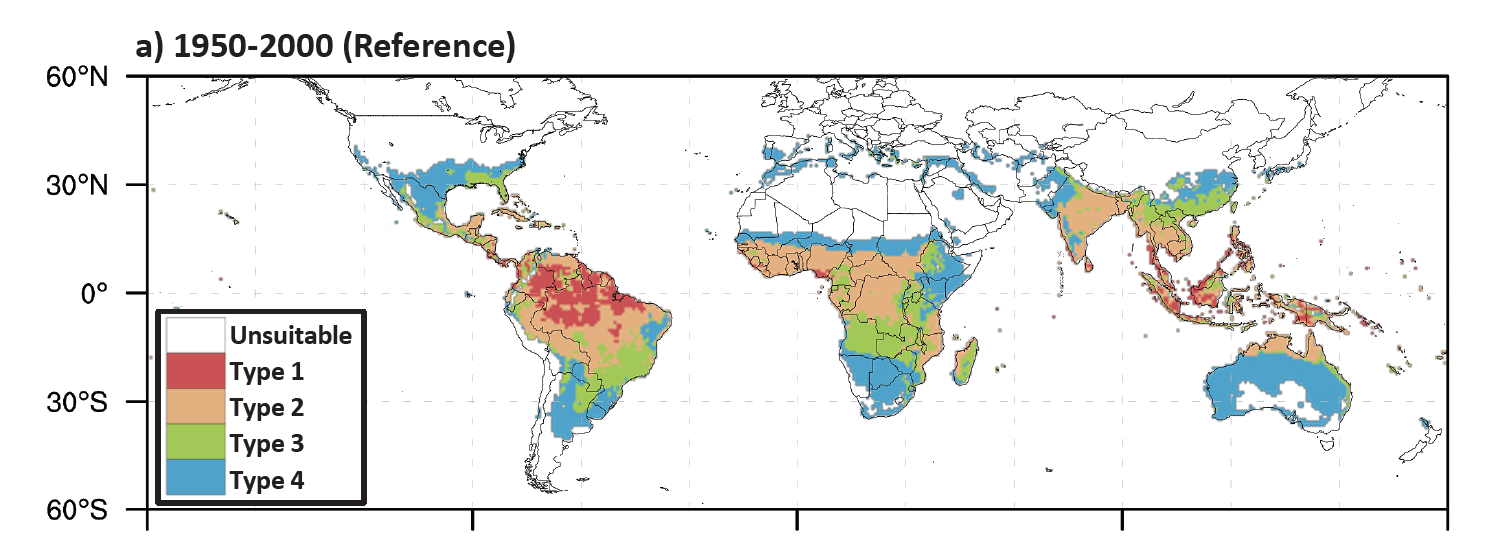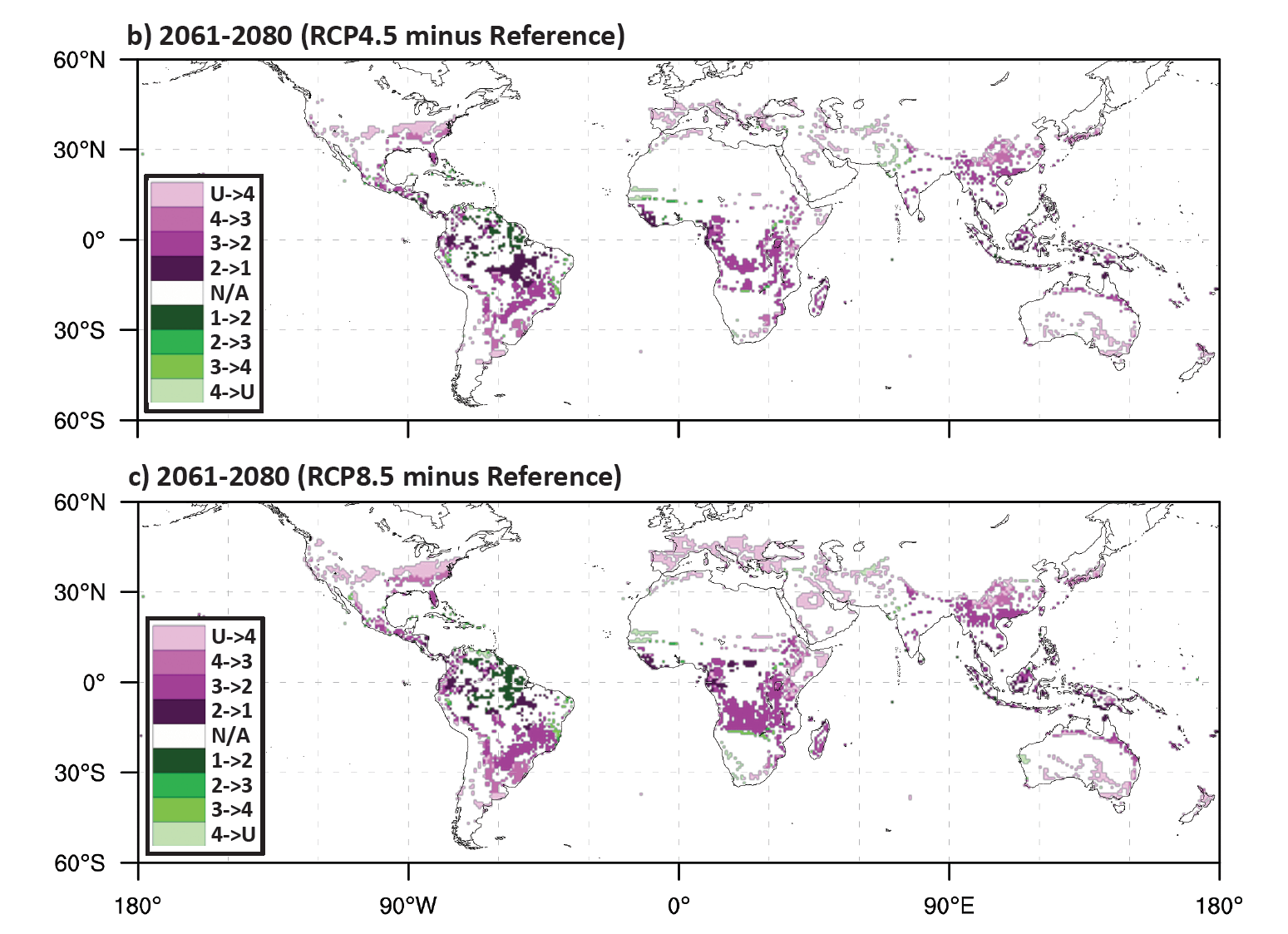
Climate change to widen range of disease-carrying mosquitoes, says study
Robert McSweeney
04.28.16Robert McSweeney
28.04.2016 | 3:31pmInfectious diseases, such as dengue and the Zika virus, could spread to new parts of the world as mosquitoes expand their habitats in a warmer, wetter world, a new study suggests.
By 2061-80, an additional half a billion people could be at risk from diseases carried by the Aedes aegypti mosquito, the study says – and could even rise to more than five billion under a scenario of high population growth.
Predators
There are roughly 3,500 species of mosquito buzzing about on the Earth. One of the most common is the Aedes aegypti.
These blood-sucking insects are canny predators. They are well adapted to urban areas, often lying low under beds and in wardrobes before venturing out in the daytime to seek their prey.
And their preferred prey is, well, you.
The female, which needs the protein in blood to develop its eggs, has acquired something of a taste for humans. They are adept at the “sneak attack” – approaching victims from behind and biting ankles and elbows to avoid being noticed.
Aedes aegypti are “sip feeders”, preferring to take small blood meals from lots of people. This makes them prolific at spreading disease; they are the main carrier of viruses that cause dengue, Zika, yellow fever and chikungunya.
Estimates suggest 390 million people a year are infected with dengue and the recent outbreak of the Zika virus in South America has largely been driven by Aedes aegypti.
Currently, approximately 63% of the world’s population live in areas where Aedes aegypti are found. The range of these mosquitoes is largely limited by climate – they like the hot, wet conditions of the tropics and subtropics.
However, a new study, published this week in the journal Climatic Change, suggests their habitat could expand as the climate warms – putting millions more people at risk from the viruses they carry.
Suitable climate
To forecast how the global distribution of the Aedes aegypti might change in future, the researchers first assessed existing habitats across the world. They assigned each area to one of the following four categories of Aedes aegypti abundance, based on the suitability of the climate:
- Type 1: Year-round high abundance (e.g. Manila, Philippines);
- Type 2: Year-round presence, but only seasonal high abundance (e.g. Chiang Mai, Thailand);
- Type 3: Seasonal presence, with eggs surviving through winter (e.g. Buenos Aires, Argentina).
- Type 4: Seasonal presence, but no eggs surviving through winter (e.g., Puebla City, Mexico).
You can see how the different categories are currently spread across the world in the map below. Aedes aegypti are most abundant in the areas shaded red, such as northern South America and much of southeast Asia.

Existing global extent of Aedes aegypti, for the four different category types (see above). White shading indicate areas that are currently unsuitable for Ae. aegypti. Source: Monaghan et al. (2016).
Using projections of temperature and rainfall, the researchers simulated the potential change in global Aedes aegypti habitat by 2061-80. They used two scenarios of climate change – one under moderate greenhouse gas emissions (RCP4.5) and another under high emissions (RCP8.5).
The researchers found the potential habitat range for Aedes aegypti increases by 8% under RCP4.5, and by 13% under RCP8.5. At today’s population, this translates to between 298 million and 460 million additional people exposed.
The maps below show the changes in habitat projected for the two scenarios. The purple shading indicates areas where the mosquitoes are expected to become more prevalent, while the green shading shows the opposite.

Projected change in future extent of Aedes aegypti for 2061-80 under RCP4.5 (upper map) and RCP8.5 (lower map). Purple shading indicates an increase in abundance, green shading shows a decrease, and white shading shows no change. Darkness of shading indicates which category type the abundance is expected to shift between – e.g. dark purple indicates a shift from Type 2 to Type 1 (see “2->1” in the key). Source: Monaghan et al. (2016).
The pale purple shading indicates where the climate is currently unsuitable for Aedes aegypti, but is expected to become suitable on a seasonal basis in the future. Lead author Dr Andrew Monaghan, a scientists at the National Center for Atmospheric Research in Colorado, explains to Carbon Brief:
In much of the tropics and subtropics, the dark purple shading shows where the habitat shifts from being suitable seasonally, to being suitable year-round. This includes much of central Africa, Central America, and China.
Projected drier conditions in the Amazon rainforest mean that some areas will become less prevalent for Aedes aegypti in the future (green shading), the study says.
Population growth
With rising global population, the habitats of Aedes aegypti will also be home to more people in the future.
At present, approximately 3.8 billion people live in areas exposed to these mosquitoes. Accounting for both climate change and population rise, the researchers estimate that this could increase by 2.2-2.5 billion in 2061-80 (based on a global population of around 8.5 billion), or even by 4.8-5.1 billion in a world where global population surpasses 11 billion.
Such a rise in the number of people exposed to Aedes aegypti would have important implications for public health, says Monaghan:
Cutting greenhouse emissions will “make a dent” in this increase in exposure, says Monaghan, but improving access to clean water and sanitation can also go a long way to reduce breeding grounds for mosquitoes:
Studies like this one can help identify where public health actions need to be targeted, says Dr Paul Parham, a lecturer in public health at the University of Liverpool, who wasn’t involved in the study. He tells Carbon Brief:
And while increased abundance of Aedes aegypti won’t necessarily translate to a higher risk of mosquito-borne diseases as the world changes, says Parham, it “certainly provides a strong warning” for the future.
Main image: A picture dated 30 January 2016 showing the mosquito Aedes Aegypti in San Jose, Costa Rica. Costa Rica’s Health Ministry announced on 31 January 2016, that as part of efforts to combat the Aedes Aegypti that transmits zika, dengue and chikunguna, it plans to use a bacteria to attack it. The bacteria called ‘spinosad’ (Saccharopolyspora spinosa) is applied as a pill in water tanks large, natural or not, where mosquito breeding is suspected. A panel of WHO-appointed experts is to meet 01 February 2016 to advise WHO chief Margaret Chan whether the situation should be classified as a so-called public health emergency of international concern, as was the case with Ebola. © EPA/Jeffrey Arguedas.
Monaghan, A. J. et al. (2016) The potential impacts of 21st century climatic and population changes on human exposure to the virus vector mosquito Aedes aegypti, Climatic Change, doi:10.1007/s10584-016-1679-0.

